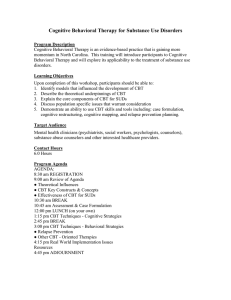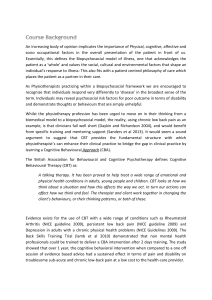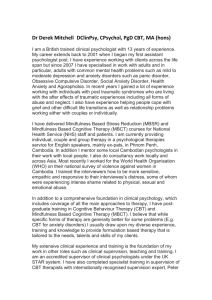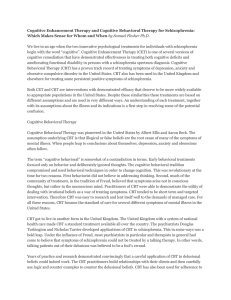QUEENS COLLEGE, CUNY NEUROPSYCHOLOGY DOCTORAL PROGRAM FIRST DOCTORAL EXAMINATION
advertisement
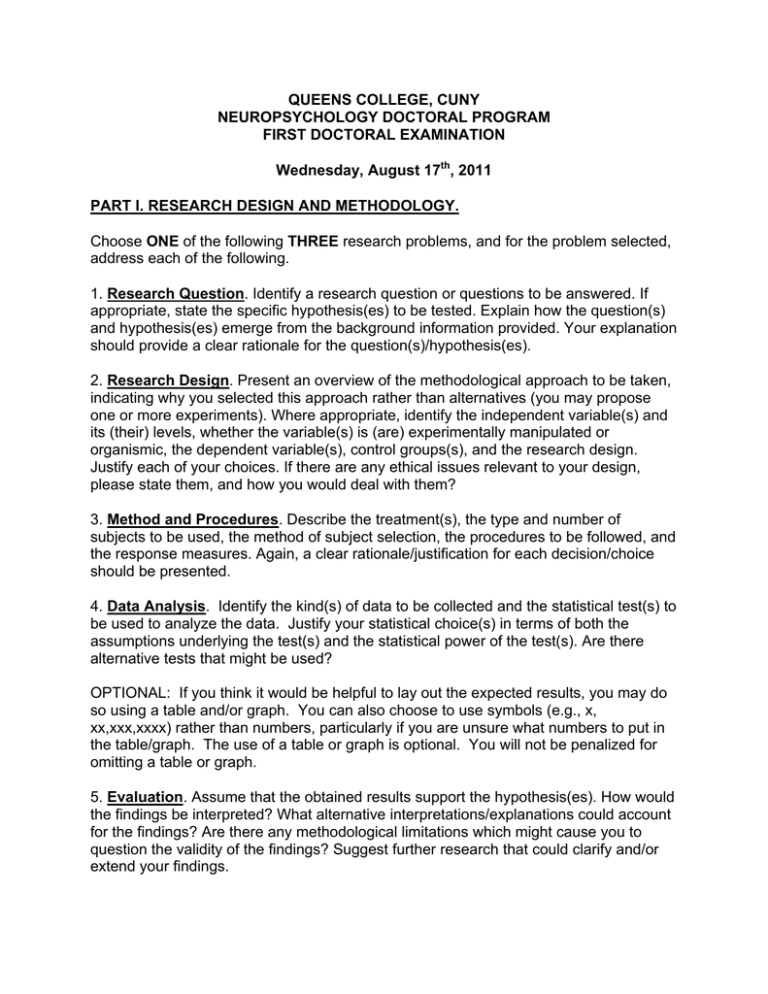
QUEENS COLLEGE, CUNY NEUROPSYCHOLOGY DOCTORAL PROGRAM FIRST DOCTORAL EXAMINATION Wednesday, August 17th, 2011 PART I. RESEARCH DESIGN AND METHODOLOGY. Choose ONE of the following THREE research problems, and for the problem selected, address each of the following. 1. Research Question. Identify a research question or questions to be answered. If appropriate, state the specific hypothesis(es) to be tested. Explain how the question(s) and hypothesis(es) emerge from the background information provided. Your explanation should provide a clear rationale for the question(s)/hypothesis(es). 2. Research Design. Present an overview of the methodological approach to be taken, indicating why you selected this approach rather than alternatives (you may propose one or more experiments). Where appropriate, identify the independent variable(s) and its (their) levels, whether the variable(s) is (are) experimentally manipulated or organismic, the dependent variable(s), control groups(s), and the research design. Justify each of your choices. If there are any ethical issues relevant to your design, please state them, and how you would deal with them? 3. Method and Procedures. Describe the treatment(s), the type and number of subjects to be used, the method of subject selection, the procedures to be followed, and the response measures. Again, a clear rationale/justification for each decision/choice should be presented. 4. Data Analysis. Identify the kind(s) of data to be collected and the statistical test(s) to be used to analyze the data. Justify your statistical choice(s) in terms of both the assumptions underlying the test(s) and the statistical power of the test(s). Are there alternative tests that might be used? OPTIONAL: If you think it would be helpful to lay out the expected results, you may do so using a table and/or graph. You can also choose to use symbols (e.g., x, xx,xxx,xxxx) rather than numbers, particularly if you are unsure what numbers to put in the table/graph. The use of a table or graph is optional. You will not be penalized for omitting a table or graph. 5. Evaluation. Assume that the obtained results support the hypothesis(es). How would the findings be interpreted? What alternative interpretations/explanations could account for the findings? Are there any methodological limitations which might cause you to question the validity of the findings? Suggest further research that could clarify and/or extend your findings. 1) You have reached an age where you are starting to see signs of presbyopia (the need for reading glasses due to the decreased ability of the lens of the eye to focus on close objects). Your ophthalmologist suggests that in the next year or so, you will need to use reading glasses. This is the standard time line for people who are in your current state. In the meantime, he suggests that you try a new form of vision therapy called ClearVue that involves various exercises that involve alternating focusing on close and far objects for several minutes a day. He claims that people who use the ClearVue therapy in general appear to delay the onset of presbyopia and the need for reading glasses by about a year, and that this delay is less for people who start the therapy after the age of 50. Design an experiment to test your ophthamologist’s claims. 2) A drug company claims that a new antipsychotic drug "neurolepto" ameliorates symptoms of schizophrenia. In one study of mixed patients (i.e., age, type of schizophrenia, ...) the results seemed promising in some patients but in general showed great variability within the group as a whole. Design a study that will effectively test this new compound taking into consideration age, type of symptoms and dose of the drug. 3) Optimist et al. (2010) reported a study in which 50 adults with agoraphobia were randomly assigned to group cognitive behavior therapy (CBT) or an attention control condition. The groups were accurately matched on participant characteristics. In the CBT group the participants received education about agoraphobia, relaxation training, instructions to self‐expose to cues for anxiety and cognitive restructuring. In the attention condition participants discussed their symptoms, their impact and ways they had found helpful to address their problems in the past. There were treatment manuals for both conditions and observation of therapist behavior indicated 100% compliance in all sessions of both attention control and group CBT. After treatment participants in the control group reported significantly fewer anxiety and depression symptoms and were more likely to return to work than participants in the control group. Optimist et al. concluded that CBT was an effective treatment for agoraphobia. In a commentary article, Curmudgeon (2011) opined that “Optimist et al.’s so called CBT is merely old exposure therapy wine served up in a new cognitive therapy bottle.” Nothing in their article suggests that cognitive therapy is an effective treatment for agoraphobia, in fact it is merely time wasted that should be spent on exposure treatment." Optimist et al. (2011) published a reply stating that " ... hundreds of studies have repeatedly demonstrated that cognitive therapy is an essential component of CBT,” and that “Curmudgeon is a dinosaur still grazing in the behavioral swamps of 10 million years BC (Before Cognition.)" Design an experiment to resolve this debate.

